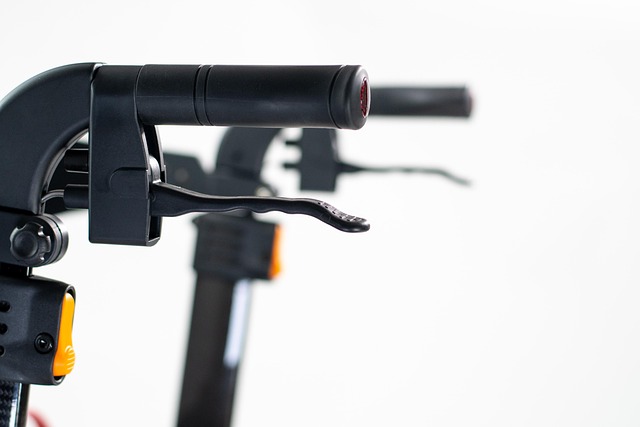How to Use a Rollator Walker: Mastering the Art

Photo by moritz320 on Pixabay
A rollator walker, often known as a wheeled walker, is a fantastic tool to aid mobility and independence. However, if you’ve recently acquired one, you might be wondering, “how do I correctly operate this device?” In this article, we’ll guide you step-by-step on how to use a rollator walker effectively, ensuring safety and comfort. After all, mastering your rollator walker can significantly boost your confidence and enhance your daily activities.
Setting Up Your Rollator Walker
Before you start using your rollator walker, it’s crucial to ensure it’s correctly adjusted. The primary goal is to make the walker adapt to your body, not the other way around. Here’s how to set it up:
- Height Adjustment: The handlebars should align with the crease of your wrist when your arms hang naturally by your side. This height ensures your posture remains neutral while using the walker.
- Brakes Check: Test the brakes to make sure they engage and disengage smoothly. This is crucial for your safety, especially when you need to stop or slow down.
- Seat Adjustment: If your rollator has a seat, ensure it’s at a comfortable height for you to sit and stand without straining.
- Add-ons: Equip your walker with essential accessories such as a basket for carrying items, a cup holder, or a cane holder if needed.
The Four Main Actions with a Rollator Walker
Once you’ve set up your rollator walker, it’s crucial to master the four main actions associated with its use:
- Standing Up
- Walking
- Turning
- Sitting Down
Let’s explore each action in more detail.
Standing Up with a Rollator Walker
- Brake Engagement: Before standing, ensure the brakes are engaged to prevent the walker from moving.
- Positioning: Move forward and sit as close to the edge of the chair as you feel comfortable. Keep your feet under you, ideally with your toes directly below the edge of the chair.
- Arm Placement: Place both hands on the arms or seat of the chair or one hand on the chair and the other on the walker. Avoid tipping the walker by placing too much weight on one side.
- Standing Up: Lean forward until you feel your weight shifting to your feet. Use your legs to stand up, with your arms mainly assisting with balance.
- Balance Check: Before you start walking, test your balance and ensure you’re stable. Finally, disengage the brakes and prepare to move.
Walking with a Rollator Walker
- Walker Placement: Place your walker ahead of you before taking any steps.
- Walking Motion: Gently roll the walker ahead of you as you walk. Keep it close enough that it offers support but doesn’t impede your walking.
- Braking: Use the brakes to control the speed of the walker and keep it at a comfortable distance from you.
- Uneven Steps: If you notice one step is longer than the other, it’s better to shorten your longer step to maintain balance.
Turning with a Rollator Walker
- Direction: If you’re already moving forward, turn by walking in the direction you wish to go. The walker will naturally follow you.
- Stable Turn: If you’re stationary and want to turn, keep the walker in front of your chest and take small steps to turn your body. The walker will naturally move with you. Avoid twisting your back or jerking the walker as it can lead to balance issues.
Sitting Down with a Rollator Walker
- Position: Stand directly in front of the chair, facing away from it. The back of your legs should be almost touching the chair.
- Brake Engagement: Engage the brakes of the walker.
- Sitting Process: Reach behind for the chair with both hands or with one hand while the other remains on the walker. Slowly lower yourself using your legs as much as possible.
Using a Rollator Walker on Stairs
A crucial rule when using a rollator walker is to never use it to go up or down stairs. Always ensure all four wheels are on the ground. If you need to navigate stairs and there’s no ramp or elevator available, consider switching to a cane or having someone assist you without the rollator.
Additional Rollator Walker Tips
- Regular Check-ups: Regularly check your rollator walker for any wear and tear, especially on the wheels and brakes. This is crucial for maintaining the device’s longevity and your safety.
- Parking: Park your rollator in designated areas and ensure it does not obstruct paths or pose a tripping hazard to others.
- Safety Practices: Always keep all four wheels on the ground, stay within the walker, keep the walker close to your body, and use the brakes to control the walker’s speed.
Frequently Asked Questions
You might have some questions about using a rollator walker. Below are answers to some frequently asked questions.
What is a Rollator Walker?
A rollator walker, also known as a wheeled walker, provides assistance with balance and support while walking. It’s beneficial for the elderly, injured, or disabled individuals and anyone needing extra support while moving.
How to Get Up from a Chair Using a Rollator Walker?
Your rollator can assist you in getting up from a chair or other low surfaces. The key is to push up from the surface you’re sitting on and not pull down on the walker since that can cause it to tip over and lead to a fall.
How to Close and Lock a Rollator Walker?
Most modern walkers can be closed with one hand simply by pulling up on the seat or strap. To lock your walker, apply the park brakes, usually activated by pushing down on the brake levers.
Conclusion
Mastering how to use a rollator walker might take some practice, but once you get the hang of it, you’ll wonder how you ever managed without it. It’s an excellent tool for enhancing mobility and independence, and with these tips and techniques, you’ll be able to use your rollator walker safely and comfortably.




